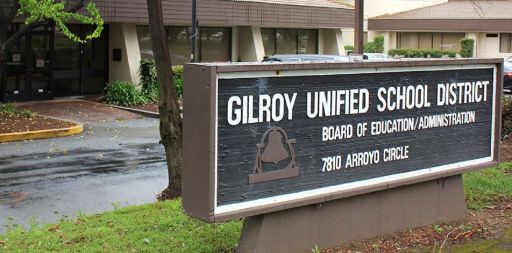A typical day during the week for Diana J. and her son, a fifth-grader at Las Animas Elementary, usually begins with them sitting in front of the computer, gearing up for another day of distance learning.
It sounds like a simple enough process, yet, it’s been nothing but a nightmare for them as they still struggle with internet access and having a reliable device that he can use to get his school work done.
“It’s frustrating for him and I see it,” she said. “He’s trying his best and for him not to be able to participate…it’s definitely frustrating.”
The Gilroy resident said it’s discouraging as a parent because they’re trying to make the best of a situation that’s been nothing but misery for her family. She believes that Gilroy Unified School District needs to hear the community and understand the different barriers for many families in the area.
“I just feel like there’s a disconnect between the district and the community,” she said. “I don’t know what their efforts are but I don’t get calls to say, ‘Hey, how are you doing?’”
Rosanna Alvarez, a supporter of the Comite Para La Justia (Committee for Justice) group, said she feels the same way.
“Obviously there’s a gap, there’s a disconnect and we’ve been saying it since the beginning,” she said. “The district says one thing…maybe that’s the best case scenario or maybe that’s how it’s supposed to be but the fact is we have to address that there’s a gap there.”
Comite Para La Justia was created to address “digital segregation” related to the digital divide within Gilroy Unified School District. There are still concerns about the reliability of the internet service hotspot devices that were provided to families at Ochoa Migrant Housing Center and in rural areas of Gilroy.
“While it may not be the district’s responsibility to install wifi hotspots to ensure that every child has access to their education,” Alvarez said, “it is also worth noting that we are at week 7 of the school year and we still have families in Gilroy with no access, who are being written off as disengaged.”
Alvarez said she believes there’s roughly 300 families still without internet service. Comite Para La Justia organized two actions that began with a peaceful protest on Sept. 13 in the downtown area and a town hall meeting on Sept. 20.

Diana participated in the march as she joined hundreds of other frustrated parents and guardians who are in a similar situation as her.
“It’s not just me having these frustrations, it’s a system issue,” she said. “It’s not just me as a parent, it’s bigger than me. Our kids deserve equal access.”
Diana said it’s been hard for parents to communicate with one another because some might not have access to Facebook group pages or other websites related to the school district.
Alvarez said the issues they’re experiencing within Gilroy Unified precede Covid-19. She said the concerns are being frustratingly exacerbated in this moment in spite of their efforts to fill in as a community to address gaps in services.
Alvarez said that the City of Gilroy has a migrant population in long-established rural areas of South Santa Clara County. She said the digital divide extends beyond the migrant camps themselves.
Alvaro Meza, assistant superintendent of business services at Gilroy Unified, said they’re working on applying for a grant to help alleviate some of the ongoing issues. He said the Santa Clara County Office of Education asked the school district to respond to a grants/survey that they recently filled out.
Meza said that most school districts in Santa Clara County are concerned about students not being able to log in and finish their work.
“No one single entity can solve this problem,” he said. “Here’s an example of us continuing to work with the county office of education and with the city and their partners to see what can be done in certain pockets of Gilroy.”
Meza said that they’ve been reaching out to families since March and identifying the ones that don’t have hotpots, including those at the Ochoa Migrant Housing Center. He said there are more than 100 students that live at the migrant center but not all of them are Gilroy Unified students.
Meza mentioned that they’ve visited the Ochoa Migrant camp with counselors and their migrant department, knocking on every single door. He said they discovered that 40 of their students have a hotspot that can provide the internet for everybody at the site.
“Now we have substantial investment into the camp, providing the internet for everybody that the district is paying for,” he said.
Meza said they made sure that the temporary improvements included getting a wired connection that blanketed the development with 18 access points.
Meza said they’ve also been calling families of students that have been missing school to make sure if it’s a hotspot or a device issue.
“I think the challenge here is we recognize in the rural areas around Rucker Elementary where it’s just mostly farm areas, no matter the provider you’re going to get a weak signal,” he said. “Even if we give you a military grade hotspot, it’s going to be weak.”
Alvarez said some students might have their hotspots but connectivity continues to be an issue. She said parents are reaching out for advice, asking if they should pay for the internet despite being in financial straits.
“There’s an ongoing pattern of saying that kids and families are disengaged and the solutions to address the digital divide focus on only making sure parents know how to use the technology,” she said.
Diana said it’s been difficult working at her job and trying to help her kids with troubleshooting issues related to distance learning. She said she also just wishes it was an easier process to get a hotspot through the school rather than the district.
“There’s way too many hurdles to jump,” she said.
Diana said she reached out to Las Animas in mid-September to ask if there were any hotspots available because there are multiple people in the house using the internet. The school told her that the district has to approve her request and that she would be put on a waiting list.
“I did tell them that I can’t wait for this,” she said. “It’s something that’s affecting my son’s learning and he has different services so he needs to logon with other teachers for his 1-on-1 and to get additional support.”
Diana said she received a call from the student services coordinator and she was told they were going to forward her request to the IT department, which put her on another waiting list.
Diana said that her son’s Zoom classes were freezing and that he’s had trouble trying to sign on to a class or lab programs to do his work. She was told it was a technical issue, yet, she never received a call back from the IT department.
Diana emailed Las Animas Principal Velia Codiga and the student services coordinator, telling them that she hadn’t heard back from the IT department or an update.
“I asked them what’s going on because this is impacting my son,” she said.
It wasn’t until about two weeks later that she got a call from the IT department, according to Diana. They told her that the computer was the issue because it doesn’t have the capability to be on a Zoom call and run other programs at the same time.
“Having to multitask on these computers just creates a big lag,” she said.
Diana said she wrote about the computer issue in an email she sent to the school and she believes that they didn’t acknowledge it. She eventually got a hold of a hotspot but she wasn’t able to pick it up until Sept. 28.
“It seems like there’s just a lot of hoops that you have to go through to even get support from IT,” she said. “It only makes me think of others that might not be reaching out.”
Meza said the district is trying to address the issue with Google Chromebook devices that are not capable of simultaneously running a Zoom meeting and other software required to do school work. He said the board of education is going to recommend an option to purchase roughly 6,000 higher end Chromebooks, which will cost about $3 million.
“What we are proposing to the board is a slightly scaled up version of a Chromebook that will give you the ability to still be on Zoom, watch the YouTube video,” he said. “The resolution might not be ultra high def but you’ll be able to at least get the content and that’s the important part of it.”
Meza said Gilroy Unified has been committed to making sure students don’t fall behind. He said they started a child care program two weeks ago at Rucker Elementary that allows about 50 elementary and middle school students whose families can’t get internet access at their residence.
On Sept. 28, Gilroy Unified began offering the same program at Glen View Elementary for students who live in that area. Meza said they’re allowed to let students on campus through guidance from the Santa Clara County Public Health Department.
“We’re really trying to figure out how we can best serve the students that are disadvantaged, that don’t live in the area where they get a good broadband signal for the providers,” he said. “There’s just no answer.”















